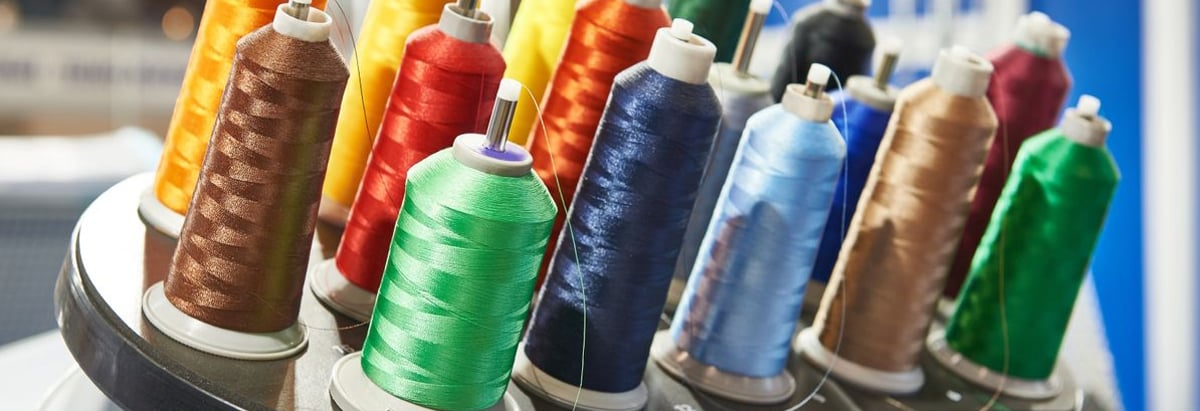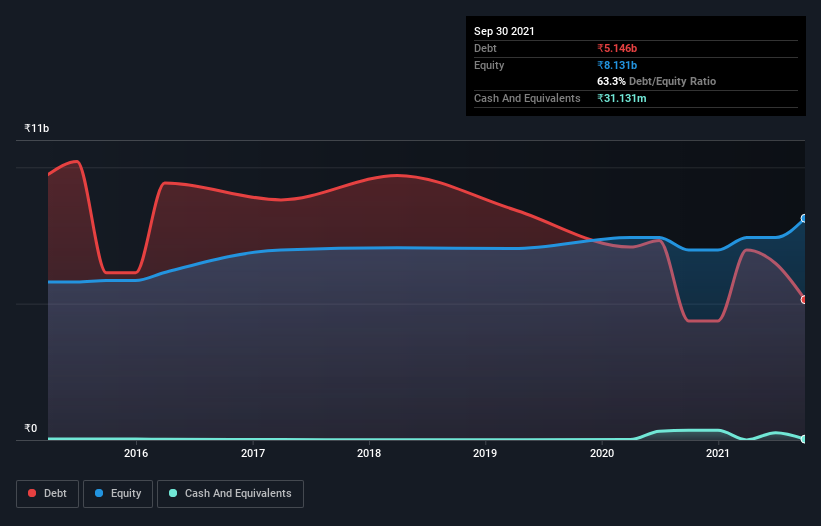These 4 Measures Indicate That Nahar Industrial Enterprises (NSE:NAHARINDUS) Is Using Debt Extensively

Legendary fund manager Li Lu (who Charlie Munger backed) once said, 'The biggest investment risk is not the volatility of prices, but whether you will suffer a permanent loss of capital.' When we think about how risky a company is, we always like to look at its use of debt, since debt overload can lead to ruin. Importantly, Nahar Industrial Enterprises Limited (NSE:NAHARINDUS) does carry debt. But the more important question is: how much risk is that debt creating?
When Is Debt Dangerous?
Generally speaking, debt only becomes a real problem when a company can't easily pay it off, either by raising capital or with its own cash flow. In the worst case scenario, a company can go bankrupt if it cannot pay its creditors. However, a more usual (but still expensive) situation is where a company must dilute shareholders at a cheap share price simply to get debt under control. Of course, plenty of companies use debt to fund growth, without any negative consequences. When we think about a company's use of debt, we first look at cash and debt together.
View our latest analysis for Nahar Industrial Enterprises
What Is Nahar Industrial Enterprises's Debt?
As you can see below, at the end of September 2021, Nahar Industrial Enterprises had ₹5.15b of debt, up from ₹4.37b a year ago. Click the image for more detail. And it doesn't have much cash, so its net debt is about the same.

A Look At Nahar Industrial Enterprises' Liabilities
According to the last reported balance sheet, Nahar Industrial Enterprises had liabilities of ₹5.90b due within 12 months, and liabilities of ₹1.22b due beyond 12 months. On the other hand, it had cash of ₹31.1m and ₹2.70b worth of receivables due within a year. So its liabilities outweigh the sum of its cash and (near-term) receivables by ₹4.39b.
Nahar Industrial Enterprises has a market capitalization of ₹7.57b, so it could very likely raise cash to ameliorate its balance sheet, if the need arose. But we definitely want to keep our eyes open to indications that its debt is bringing too much risk.
We use two main ratios to inform us about debt levels relative to earnings. The first is net debt divided by earnings before interest, tax, depreciation, and amortization (EBITDA), while the second is how many times its earnings before interest and tax (EBIT) covers its interest expense (or its interest cover, for short). The advantage of this approach is that we take into account both the absolute quantum of debt (with net debt to EBITDA) and the actual interest expenses associated with that debt (with its interest cover ratio).
Nahar Industrial Enterprises's net debt is sitting at a very reasonable 2.1 times its EBITDA, while its EBIT covered its interest expense just 3.4 times last year. While that doesn't worry us too much, it does suggest the interest payments are somewhat of a burden. We also note that Nahar Industrial Enterprises improved its EBIT from a last year's loss to a positive ₹1.9b. When analysing debt levels, the balance sheet is the obvious place to start. But it is Nahar Industrial Enterprises's earnings that will influence how the balance sheet holds up in the future. So if you're keen to discover more about its earnings, it might be worth checking out this graph of its long term earnings trend.
Finally, a company can only pay off debt with cold hard cash, not accounting profits. So it is important to check how much of its earnings before interest and tax (EBIT) converts to actual free cash flow. Looking at the most recent year, Nahar Industrial Enterprises recorded free cash flow of 25% of its EBIT, which is weaker than we'd expect. That's not great, when it comes to paying down debt.
Our View
While Nahar Industrial Enterprises's conversion of EBIT to free cash flow makes us cautious about it, its track record of covering its interest expense with its EBIT is no better. At least its EBIT growth rate gives us reason to be optimistic. Taking the abovementioned factors together we do think Nahar Industrial Enterprises's debt poses some risks to the business. While that debt can boost returns, we think the company has enough leverage now. The balance sheet is clearly the area to focus on when you are analysing debt. But ultimately, every company can contain risks that exist outside of the balance sheet. For instance, we've identified 3 warning signs for Nahar Industrial Enterprises (2 shouldn't be ignored) you should be aware of.
At the end of the day, it's often better to focus on companies that are free from net debt. You can access our special list of such companies (all with a track record of profit growth). It's free.
If you're looking to trade Nahar Industrial Enterprises, open an account with the lowest-cost platform trusted by professionals, Interactive Brokers.
With clients in over 200 countries and territories, and access to 160 markets, IBKR lets you trade stocks, options, futures, forex, bonds and funds from a single integrated account.
Enjoy no hidden fees, no account minimums, and FX conversion rates as low as 0.03%, far better than what most brokers offer.
Sponsored ContentValuation is complex, but we're here to simplify it.
Discover if Nahar Industrial Enterprises might be undervalued or overvalued with our detailed analysis, featuring fair value estimates, potential risks, dividends, insider trades, and its financial condition.
Access Free AnalysisHave feedback on this article? Concerned about the content? Get in touch with us directly. Alternatively, email editorial-team (at) simplywallst.com.
This article by Simply Wall St is general in nature. We provide commentary based on historical data and analyst forecasts only using an unbiased methodology and our articles are not intended to be financial advice. It does not constitute a recommendation to buy or sell any stock, and does not take account of your objectives, or your financial situation. We aim to bring you long-term focused analysis driven by fundamental data. Note that our analysis may not factor in the latest price-sensitive company announcements or qualitative material. Simply Wall St has no position in any stocks mentioned.
About NSEI:NAHARINDUS
Nahar Industrial Enterprises
Engages in the textile and sugar business in India.
Solid track record with mediocre balance sheet.
Similar Companies
Market Insights
Community Narratives



